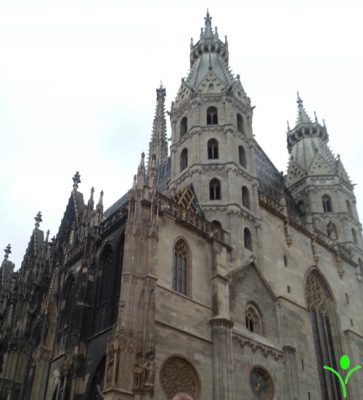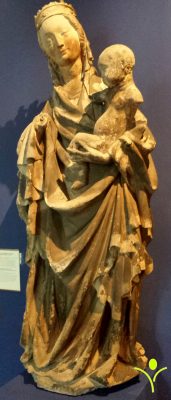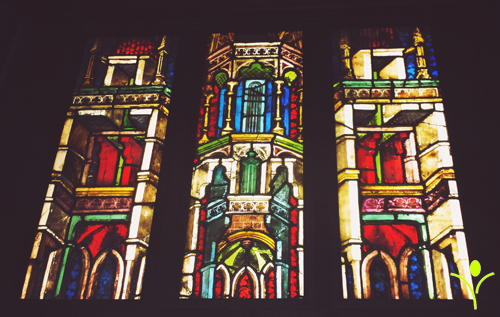The original Romanesque building, was consecrated in 1147.
In the early fourteenth century, the Habsburgs began to build the High Gothic chancel. In the mid-century, Duke Rudolf IV worked to elevate his seat of power to a diocese. In supporting the construction of the cathedral he ran into competition with his father-in-law Emperor Charles IV in Prague.
The south spire (Steffl’) begun by Rudolf was finished in 1433 and at 137 meters was the second-highest spire built in the Middle Ages. The vaulting of the Late Gothic nave was completed in the second half of the fifteenth century.
Mary and Child, around 1380-1390. It used to be on the south spire of the Cathedral.
The north spire was meant to be higher than the south tower, but construction work was stopped in 1511. Since then the external appearance of the cathedral has remained extensively unchanged.
Significant restorations took place in the nineteenth century. In the last days of the war in 1945 the cathedral went up in flames and many works of art were destroyed. Reconstruction lasted until 1957.
The building and furnishing of this emblem of the city was supported for centuries by the ruling houses and the citizens of Vienna.
Nowadays, St. Stephan’s Cathedral is one of the most famous sights in Vienna.
Stained Glass from St. Stephan’s Cathedral



